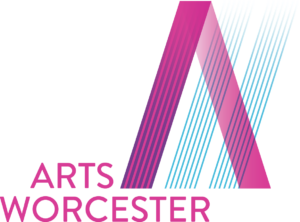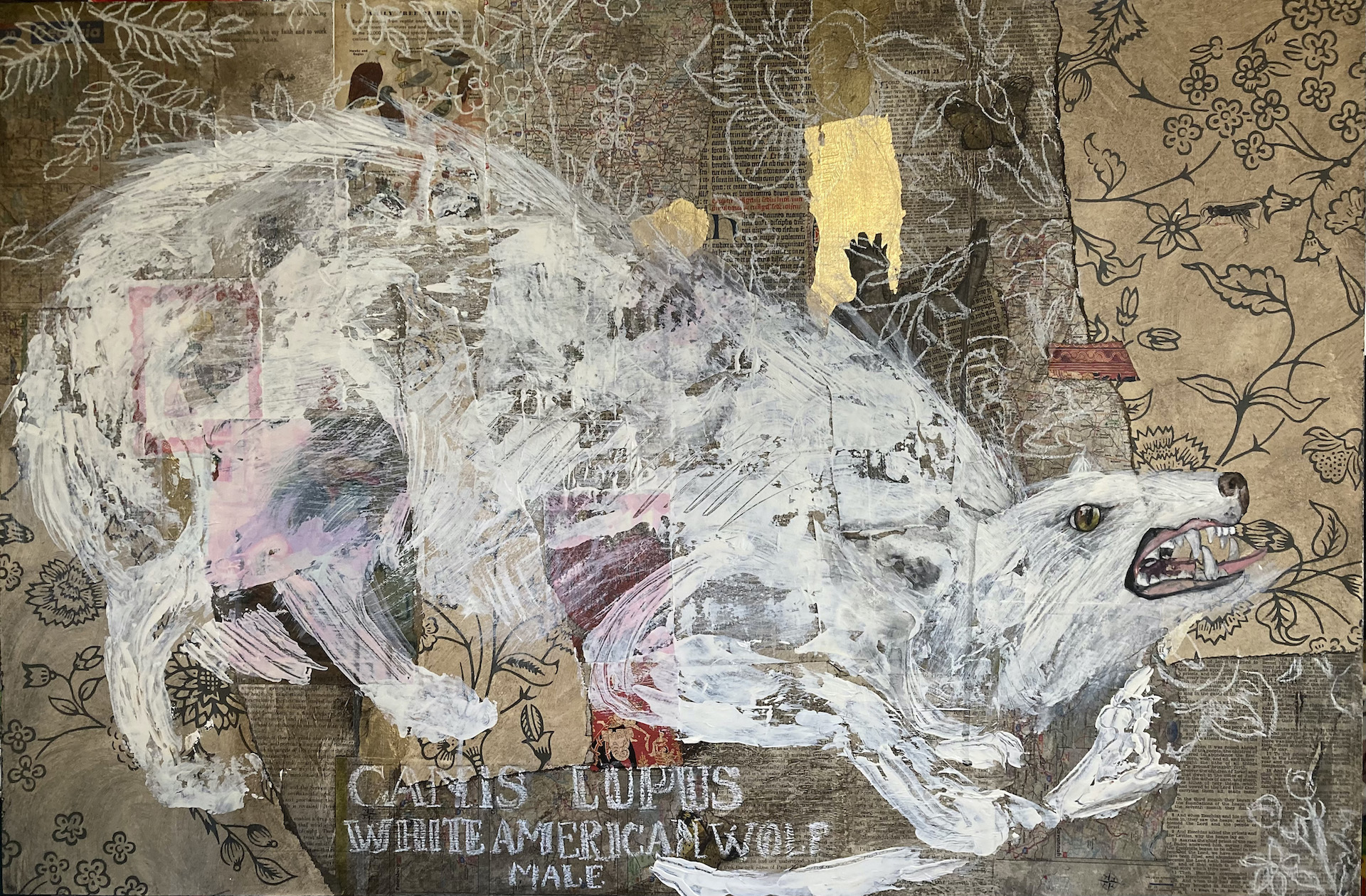Jeanette Staley is a research-based collage artist living and working in Vermont. Her work brings a feminist lens to systemic patriarchy, its history, and its destructive impact on contemporary American society. In 1992, Staley opened The Center for Artistic Expression in Hudson, MA, where she exhibited her work and the work of other artists, and offered classes, workshops, and events. She has exhibited work throughout New England. She returns to ArtsWorcester to exhibit her new body of work, Predators and Pray. This series of collage paintings were created after achieving her MFA from the Vermont College of Fine Art and a five-week stay at a feminist research artist residency in France in 2021.
statement
Jeanette Staley’s multi-media collages reinterpret the histories of early modern illustrators who documented nature, and explore intersects of heteropatriarchy, social movements, and environmental destruction. In particular, Staley refers to the politics, industry, and art of the 19th century to highlight some of the many institutional sources of this destruction that mutually depended on political and cultural tumult. The painted images reference the illustrations of artists from the 17th - 19th centuries, including John James Audubon, Pierre Belon, Maria Sibylla Merian, and The Histoire Naturelle by Comte de Buffon. These artists each sought to create a comprehensive encyclopedia of the natural world, documenting birds, quadrupeds, sea creatures, amphibians, insects, and plants. Each of these artists were in some way notable amongst their contemporaries, and Audubon is particularly under new scrutiny as we struggle with his legacy as an anti-abolitionist. In reimagining these works, Staley highlights animals that have since been imperiled by human interactions. The collaged backgrounds are layered with religious text, images and text of Revolutionary War and Civil War etchings and songs, scraps of wall paper and gift wrappings, pages from children’s books and more. Viewers are asked to consider each animal- its current environmental status, gendered associations, and status as predator or prey- as this ephemera comes in and out of focus, behind paint and chalk. What happens when an aggressive predator animal is placed against the symbolic domesticity of vintage wallpaper, or when a female jaguar emerges from religious texts on marriage? Alongside her works in the gallery, Staley includes a loose-leaf journal in which she reflects on her source material from a contemporary feminist perspective. Anecdotes from trips across the United States, notable news stories, and observations on climate changes within our lifetimes are connected to the symbolism of the animals and a long history of patriarchy, violence, and oppression. Visitors are encouraged to add their reflections to the journal, and to consider the ways that these histories continue to affect us and the natural world.

